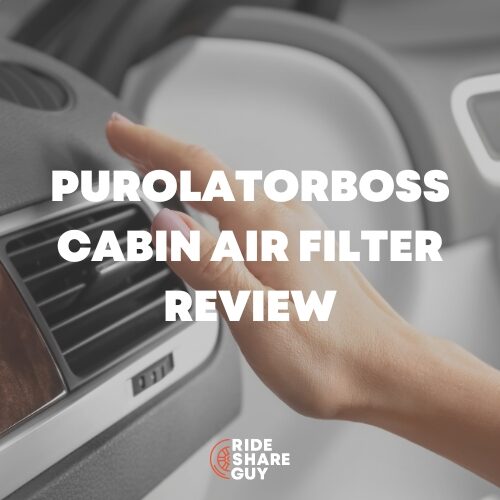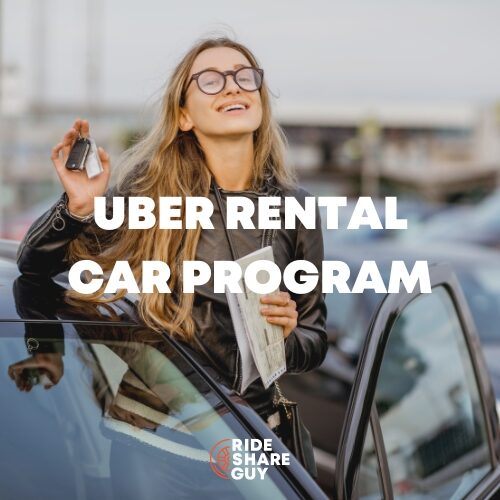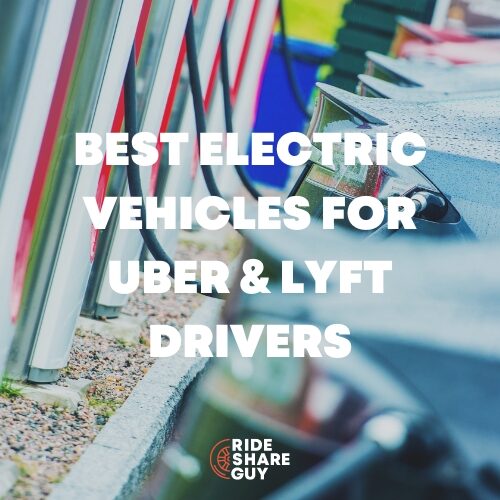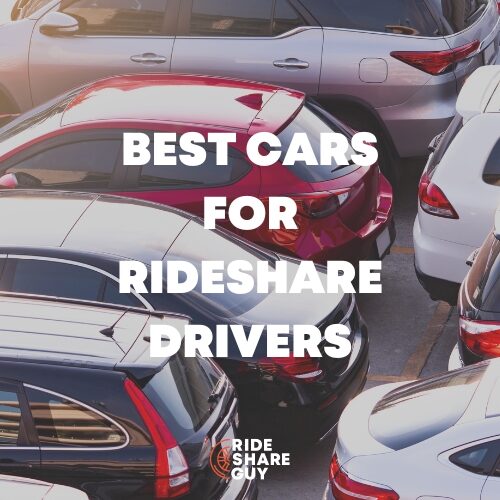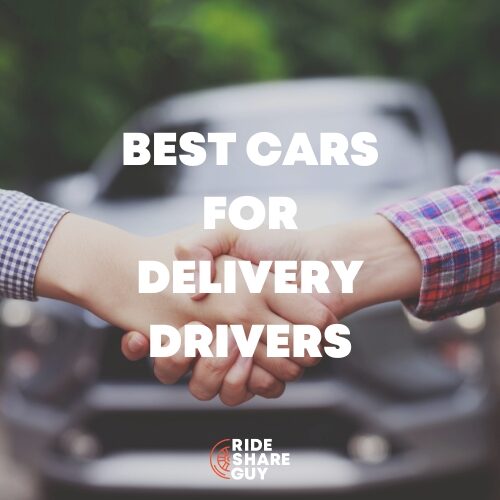Uber’s partnership with Hertz and Tesla is to provide drivers in certain cities with Teslas. This is part of Uber’s zero-emissions goal, and it made a splash in the news.
But beyond the hype, what is it really like driving a Tesla for Uber through the Hertz partnership? Does it make sense for drivers to do this?
Yes… and no. Here is my experience with the Uber/Hertz/Tesla partnership and why I think some drivers would LOVE this and why some drivers should really AVOID this.
What is the Hertz Tesla Uber Rental Program?
Hertz is quite proud of its giant investment, $4.5 billion-ish, depending on where the cars are registered. Tesla has stated it treated Hertz like any other customer.
We don’t know when the order was placed, so it’s possible Hertz could have paid more than $50,000 out the door for each car, pushing the total over five billion bucks, but if the cars are popular, they could be a moneymaker as well.
Maintenance and other costs are reduced and they can be rented for a premium.
Non-rideshare renters go through the regular Hertz site, find a location that has the Teslas, and then call to arrange the rental.
Uber drivers also rent through the website and then go pick up their car.
After a standard checkout procedure and some extra information about driving the Teslas, you’re on your way. Drivers must call or go back to the Hertz office every week if they want to keep it long-term, which is inconvenient if you live a long way from the Hertz office.
For Uber drivers, the price is $334 per week but taxes and other fees vary. That’s a big jump up from the $214-$260 a week Hertz charges for gas or hybrid rental cars, but most drivers probably use almost all that savings buying gas—that’s probably how Hertz sees it too.
Drivers can also select a “loss-damage waiver” for $8.99 a day which completely frees renters from any loss or damage during the rental period, so long as they don’t violate the rental agreement.
Read another RSG Contributors Take on Renting a Tesla for Uber through Hertz
How Do I Sign Up to Drive a Tesla for Uber?
The first step to renting a Tesla is to be an eligible driver:
- You need more than 150 trips
- Must have a 4.7 rating
There’s a portal to the correct Hertz signup page in the Uber app, but I think the best way to make it happen is to call Uber’s customer “service” through the app.
Select the proper option, and language, for assistance with rentals and tell them you want a Tesla. You’ll get put on a waiting list.
I don’t know how long it will be before you get the call—it was a few weeks for me.
When you do, there’s no waffling—they’ll want you to come and pick that car up ASAP, or they’ll rent it to the next driver.
Show up at the office and after a bit of paperwork and orientation, you’ll soon be on your way in your own Tesla Model 3.
My Experience Getting a Tesla to Drive for Uber
My Hertz-Uber-Tesla experience has been a rollercoaster ride from the beginning.
I picked up my white Model 3 at the local Hertz TNC rental location in San Antonio. I was one of the first eight drivers in my market to be part of the new initiative by Uber and Hertz and their partnership with Tesla.
In my market, I paid $334 for the base weekly rate. I also opted for an additional $8.99 loss damage waiver. After-tax, my weekly rate is $472.
This is how the partnership works: Hertz rents the cars out, and Uber manages the waitlist and drivers.
I signed up and about three weeks later was one of the first called to participate. I waited a week to pick mine up and ever since I’ve been on an adrenaline high!
1. I’m Not New to Driving for Uber
I’ve been doing rideshare on and off for over five years now. I’ve been through 3 vehicles—engine, engine (again), and transmission issues took me off the road! I was on the verge of giving up this gig when I read about this program.
Not only is it a step toward Uber’s zero-emissions goal, but it’s also Hertz electrification, shared mobility, and a digital-first customer experience program exclusively for Uber rideshare drivers. When I saw it, I was like, “Sign me up!”
This started in the Tier 1 rideshare markets of Los Angeles, San Francisco, San Diego, and Washington, D.C. on November 1, 2021, with other cities to follow.
I joined the waiting list expecting it would be January 2022 or later before I got a call, especially since San Antonio is a Tier 2 market at best. On the other hand, the demand for drivers is picking up here, and San Antonio is a big tourist draw, so that could be why Uber expanded here.
One thing to know about this program? Answer your phone! I was called about picking up my Tesla, and at first, I missed the call because I let unfamiliar calls go to voicemail.
Finally, I picked up the car a few days later, and there were two options: a Solid Black and a Pearl White. I wanted the black, but nope, no such luck. I got the white.
After signing my life away and warnings of the $400 cleaning fee, the $400 lost Tesla charging cable, and the $1,000 deductible (I opted for the Damage Waiver) and a short 3-minute Tesla crash course, away I went!
2. Started Driving a Tesla for Uber
I’m currently driving a white Model 3 Standard Range Plus with the premium connectivity package, autopilot, and auto-steer option.
Hindsight: Full self-drive isn’t available for the program and would be a total waste of money for rideshare. I would have rather gotten the AWD Long Range option, but unfortunately, I was not consulted.
I configured the options of my ride on Tesla’s website and it came out to be $54,900 if I were to buy it for myself. And I have to admit, the car is worth every cent of it!
This was my first experience driving an EV and a fast one at that. I was not disappointed. It more than beat my expectations based on numerous online videos and reviews.
What I Liked:
- Breaking Power: Besides the measly 5.7 second 0-60 time, it’s the perfect car for the demands of a rideshare driver. As quick as it moves, it stops just as fast. Besides electric disc braking, the electric motors also provide braking as well as regenerate power back to the enormous batteries.
- Adaptive Cruise Control: The adaptive cruise control is something I’m still getting used to. Besides setting it and forgetting it, it is great for bumper-to-bumper freeway traffic. It automatically slows down even to a stop. Then, once the vehicle in front moves, it accelerates back to my set speed, but quickly slows back down when traffic backs up again.
- Crash Avoidance: The safety features also benefit gig drivers, as well. Crash avoidance seems to work well, not that I was looking to get into one. A warning beeps if you get too close to a vehicle ahead of or beside you, and the outlines of vehicles on the screen are nice, but my favorite feature is that they turn red if too close or detect the need to auto brake.
- Cameras, Cameras, Cameras: The eight cameras are the eyes of the safety features in Tesla. They are also how the Auto Steer and Autopilot feature work. But the latter is not a necessary rideshare feature—at least not for me. It seems to depend on the condition of the roads and clear line markings. Maybe future versions will be better. For now, I’d rather have a long-range upgrade instead.
What I Would Like To See:
- Porta-Potties at Supercharger Locations: However, the positive side is taking time to stretch and take a power nap if needed. I’d like to see Tesla-maintained porta-potties at supercharger locations. A nice red one that only opens with the Tesla App!
- Ability to Use the Tesla App: Speaking of the app, one thing missing from the Hertz-Uber-Tesla experience is the ability to use the Tesla App. Since only OWNERS can add vehicles to the app, no app for you! The entry and starting of the vehicle is with a credit card-like fob that’s enclosed in thick plastic and a thick braided wire attached Hertz keychain. It works, but it’s awkward and takes away from the Tesla Experience. If we had access to the app, it would allow walk-up unlock and lock. A simple but smooth experience.
3. My Passenger Reactions
Riders are almost always impressed. I’ve gotten comments like “I like your car!” as soon as they enter the Tesla.
I’ve even gotten, “Wow, when I saw I was getting a Tesla I was so excited!”
And when they get “a taste” of Teslaration, it’s all big smiles and “wows.”
4. Two Months Into Driving a Tesla for Uber
Two months into my Hertz Tesla rental, and I’m still as excited as the first day I picked it up! But… that excitement comes at a cost.
As mentioned before, to pay for the $440 weekly rental – after-tax fees and damage waiver – one must work 22 hours with active rides, which can be 25 or more hours. That’s assuming your average is $22 an hour. If you’re lucky enough to make more per hour, then your time to zero will be sooner.
Time to Zero, that’s what I work towards – and after that, it’s my money! But unlike the traditional Uber rideshare driver, this is my side hustle to get something I want, but do not necessarily need.
In my case, it’s to cure my “Tesladdiction”
tesladdiction noun
Tes-lad·dic·tion | \ ‘te-sla-ˈdik-shən
Essential Meaning of tesladdiction
1: a strong and harmful need to regularly have something (such as a Tesla) or do something (such as drive a Tesla)
- He has a tesladdiction; he drives 12 hours a day.
- His life has been ruined by tesladdiction; all he does is drive his Tesla.
2: an unusually great interest in something or a need to do or have something
- He devotes his summers to his teslaaddiction; nobody sees him from May 30 to September 1.
I don’t drive because I have to, but because I want to.
When Hertz announced their Tesla purchases and partnership with Uber I saw my chance to do what I’ve always wanted: drive a Tesla every day. You can say I have Tesla envy.
The car is more than just fun to drive, it’s a total package. Once I got over the 15” screen with its overload of information, I’ve learned to pretend it’s no longer there, and only glance at it when needed.
Will I Keep Driving a Tesla for Uber?
So will I keep driving my Tesla for Uber through Hertz? No. While I loved the vehicle and drove it for a few weeks, I won’t be keeping my “Tessie” (my nickname for the car) much longer.
Why? I think this program is best for full-time drivers – not part-time drivers. After paying the weekly fee and driving part-time, I’m only clearing $100/week.
That’s just not enough, not for me and not as a part-time driver. However, if you’re a full-time driver and you’ve been nodding along to everything I’ve said so far, try this partnership when it’s available in your city! You may really enjoy it and make enough money to make it all worth it.
Overall, I had a very positive experience with this program, even though I won’t be keeping it. Definitely consider it if you’re a full-time driver – or even temporarily as a part-time driver, especially if you want to see what it’s like driving a Tesla!
Pros & Cons of Driving a Tesla for Uber
Pros
- Quick – responsive vehicle!
- Sleek
- Impressive
- Maneuverability
- Comfortable
Cons
- No Tesla app access
- Lack of quick charging
- Cost
- White is difficult to keep clean (a big concern for rideshare drivers!)
- Autopilot doesn’t work on older freeways
- Car wash access
- Range vs Autopilot. Hertz should have skipped AP and upgraded to the long-range AWD version. An extra 100 miles would make it perfect for a 10-hour rideshare driver’s day!
- Floor mats – why none?
Is it Worth it to Rent a Tesla to Drive for Uber?
Is it worth it to rent a Tesla Model 3 from Hertz? Well, if you want to experience rideshare work in an electric vehicle—a really nice electric vehicle, the Hertz/Tesla/Uber program may be the only game in town, really. So on that level, yes, go for it, but keep in mind the experience of many renters is it takes working about 20 hours a week just to break even.
If the question you’re asking is “is it cost-effective to rent a Tesla for gig work?” that depends on some factors, like:
- Where do you drive?
- How long are you planning to do this work—is it a side hustle or a full-time profession?
- Are you renting a Tesla because you want to see what it’s like?
If you just want to check out a Tesla, then I’d say $334 a week is a pretty good deal—it’s less than renting most other cars, after all, and if you drive enough the fuel savings will probably make it about the same as one of the other Uber rental cars Hertz or Avis has available.
But what about the long term? You can keep a Hertz Tesla as long as you’d like, and all maintenance is included as well as insurance. I’d assume a long-term renter will have a way to charge the car at home (the average cost of installing a level-two charger is in the $1,000 range, and there’s a federal tax credit to help pay for it), which will bring costs to a nationwide average of 13 cents per kWh.
To help readers figure this out, I built one of my world-famous* spreadsheets, but I’d better explain my assumptions.
In addition to electricity prices, I also figured the cost of gas at the nationwide average of $3.31 a gallon, and insurance at about $2,264 a year (Bankrate.com’s average for full coverage plus about $50 a month for rideshare coverage; I added about 20% for the Tesla because it’s more to insure). I also figured full-time drivers average about 40,000 miles a year.
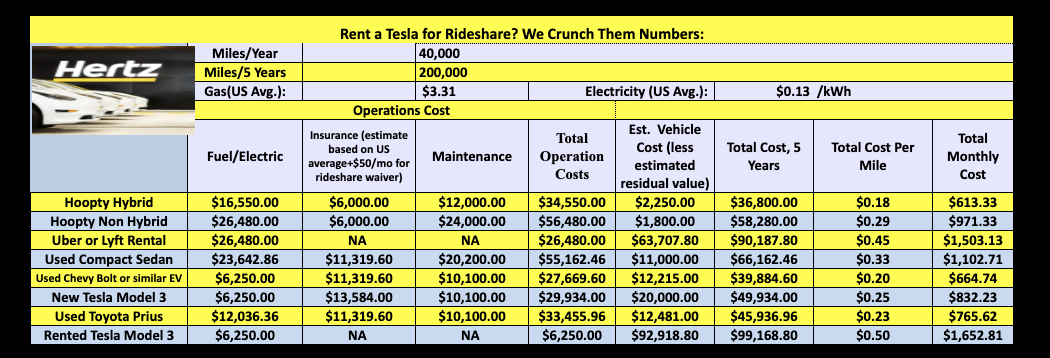
Maintenance numbers came from Your Mechanic.com‘s database, and since EVs require little maintenance I cut that in half for those vehicles.
For vehicle costs, I used rental fees (with the average US sales tax), MSRP, or an estimated used-car price based on a quick Craigslist/Autotrader rabbit-hole dive (and watching a Youtube video about buying a 2005 Prius for $1,250 and replacing the battery for another $1,000).
Want to test out this spreadsheet yourself? You can access it here – click “File” and then “Make a Copy” to make your own edits!
Takeaways for Drivers
My first thought after finishing my spreadsheet was wow! You could buy two Tesla Model 3s for what you’d spend on rental fees for five years, so of course, buying one would be more cost-effective.
Buying a hoopty hybrid is obviously the most cost-effective way to do rideshare, but this isn’t a rent-vs.-own story; it’s more a rent vs. rent story, and my calculations show that you can rent a Tesla for not that much more than renting something like a Camry through Hertz, Avis, or Lyft Express Drive.
If the typical long-term renter is just doing it for a few months, I think a full-time driver would have a pretty good experience renting a Tesla compared to a gasoline vehicle.
In addition to massively reducing your carbon footprint (if you think that’s important), the Model 3 is a really nice car to spend eight or 10 hours a day in compared to a Prius or Camry, well worth the extra five cents a mile, if you ask me.
The more you drive the more sense it makes; drive 250 miles a day (60,000 a year) and the Tesla is cheaper than an ICE rental (and buying a used Chevy Bolt will be as cheap as driving a hoopty hybrid).
So is it worth it? Maybe? If you’re in a state with higher than average gas prices, or if you have another job (like realty or outside sales) that you need an efficient, high-status car for a while, or if you drive 40 or more hours per week it could be a good deal.
It all depends on your situation and your needs; I hope I gave you enough information to make an informed decision. Good luck and don’t drive yourself crazy.
